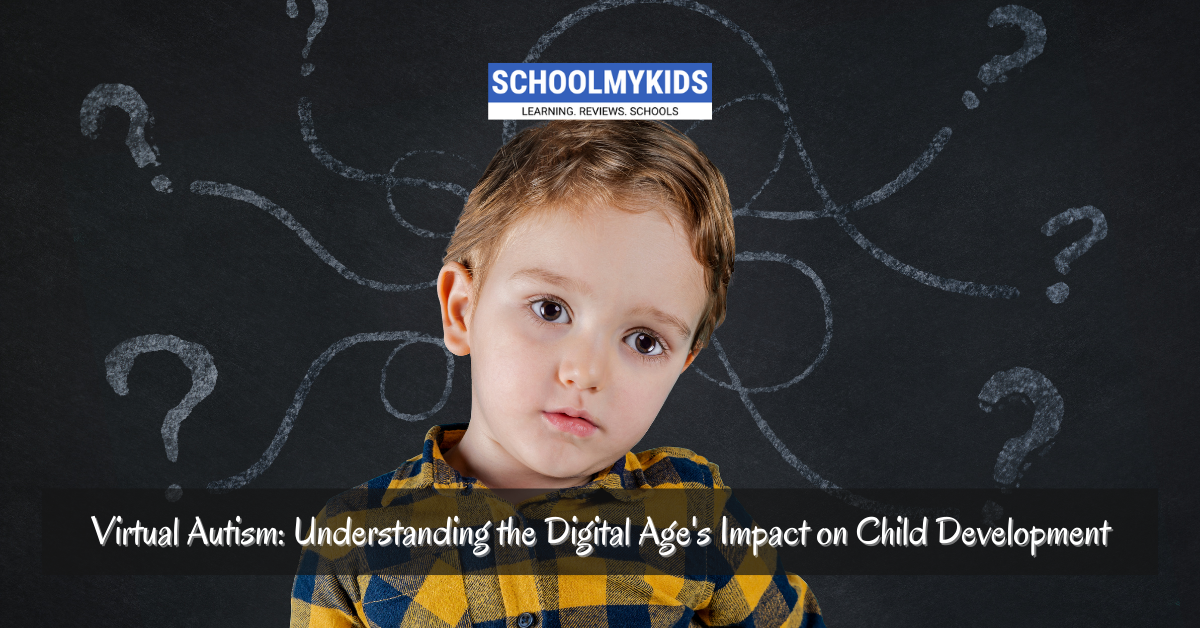In today's digital era, children are spending more time than ever on screens. This increase in screen time has led to a phenomenon known as "virtual autism." Virtual autism describes autism-like symptoms in children who have had excessive screen exposure during critical developmental periods. Understanding this condition, its causes, symptoms, and ways to address it is essential for parents, teachers, and healthcare professionals.
What is Virtual Autism?
Virtual autism isn't a formal medical diagnosis. Instead, it refers to a set of behaviours and developmental delays in children who have been exposed to too much screen time. These behaviours can resemble those of Autism Spectrum Disorder (ASD), such as difficulty with social interactions, communication problems, and repetitive behaviours.
The Rise of Screen Time
The widespread use of smartphones, tablets, and other digital devices has changed the way children learn and play. The American Academy of Pediatrics suggests that children aged 2 to 5 years should have no more than one hour of screen time per day. However, many children exceed this limit, raising concerns about their development.
How Screen Time Affects the Brain
Too much screen time during early childhood can impact brain development in several ways:
- Less Face-to-Face Interaction: Screens can replace important face-to-face interactions with parents and peers, which are crucial for developing social skills and emotional understanding.
- Attention and Focus Issues: Fast-moving images and sounds on screens can overstimulate the brain, making it harder for children to focus on slower-paced activities.
- Language Delays: Less verbal interaction with caregivers can slow down language development because children need to practice talking to develop speech and language skills.
- Sleep Problems: The blue light from screens can interfere with the production of melatonin, a hormone that helps regulate sleep, leading to sleep disturbances.
Symptoms of Virtual Autism
Children affected by virtual autism may show a range of symptoms similar to those of ASD, including:
- Delayed Speech and Language: Difficulty in speaking or understanding language.
- Poor Social Skills: Challenges in making eye contact, understanding social cues, or engaging in back-and-forth interactions.
- Repetitive Behaviors: Engaging in repetitive motions or routines.
- Sensory Sensitivities: Overreacting or underreacting to sensory stimuli such as lights, sounds, or textures.
- Attention Deficits: Difficulty focusing on tasks or activities that require sustained attention.
Diagnosing Virtual Autism
Diagnosing virtual autism can be challenging because it requires distinguishing between actual ASD and symptoms caused by too much screen time. A thorough evaluation by a paediatrician or a child psychologist is necessary. The evaluation typically includes:
- Developmental History: Reviewing the child's developmental milestones and screen exposure history.
- Behavioral Observations: Watching the child's interactions, communication, and play behaviors.
- Standardized Tests: Using tools like the Autism Diagnostic Observation Schedule (ADOS) to measure autism-related behaviors.
Prevention and Intervention Strategies
Reducing screen time and encouraging real-world interactions are key to preventing and mitigating virtual autism. Here are some practical strategies:
- Limit Screen Time: Follow recommended screen time limits. For children under 18 months, avoid screen time altogether, except for video chatting.
- Encourage Play: Promote activities that involve physical movement, creativity, and social interaction, such as playing with toys, drawing, or outdoor games.
- Foster Communication: Talk with your child, read books together, and encourage storytelling to help develop language skills.
- Create a Screen-Free Environment: Designate certain areas of your home, like the dining room or bedrooms, as screen-free zones to encourage family interaction and healthy routines.
- Model Healthy Habits: Set an example by limiting your own screen time and prioritizing face-to-face interactions.
Practical Tips for Parents and Educators
Parents and educators play a crucial role in managing screen time and promoting healthy development. Here are some practical tips:
- Set Clear Rules: Establish clear guidelines for screen use, including time limits and content restrictions.
- Be Involved: Participate in your child's screen activities to understand what they are watching or playing and to make it a shared experience.
- Provide Alternatives: Offer a variety of non-screen activities that can capture your child's interest and imagination.
- Monitor Content: Ensure that the content your child is exposed to is age-appropriate and educational.
Seeking Professional Help
If you suspect your child may be showing signs of virtual autism, seek professional help. Early intervention can make a significant difference in addressing developmental delays and improving outcomes. Professionals such as pediatricians, child psychologists, speech therapists, and occupational therapists can provide comprehensive assessments and tailored interventions.
Conclusion
Virtual autism highlights the importance of balancing screen time with real-world interactions during early childhood. By understanding the potential risks and implementing preventive measures, parents and educators can support healthy development and reduce the effects of excessive screen exposure. Remember, the goal is not to eliminate screens entirely but to use them wisely and in moderation, ensuring that children have plenty of opportunities for meaningful, face-to-face interactions and hands-on learning experiences.
References
- American Academy of Pediatrics. (2021). Media and Children Communication Toolkit.
- World Health Organization. (2019). Guidelines on Physical Activity, Sedentary Behaviour, and Sleep for Children under 5 Years of Age.
- Common Sense Media. (2020). The Common Sense Census: Media Use by Kids Age Zero to Eight.
By staying informed and proactive, we can create a balanced digital environment that nurtures our children's growth and well-being.








Be the first one to comment on this story.